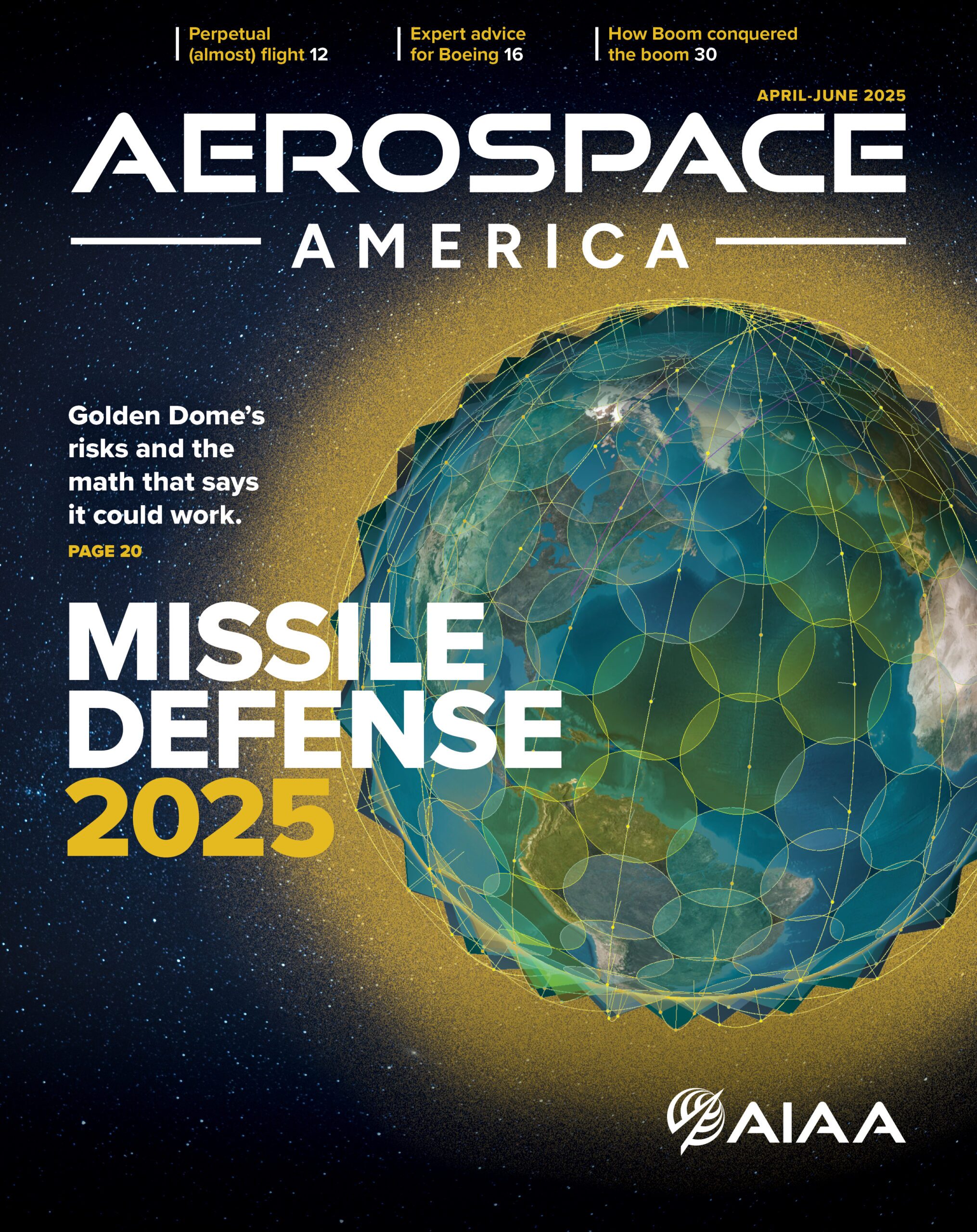Stay Up to Date
Submit your email address to receive the latest industry and Aerospace America news.
1925
July 1 — The U.S. Air Mail Service begins night service between New York and Chicago. The inaugural flight, which coincides with the first anniversary of the introduction of transcontinental air service, draws approximately 250,000 spectators along the route. With the introduction of night flying, mail can now be delivered between New York City and San Francisco in 29 hours. Aviation, July 13, 1925, pp. 38-40; Flight, Aug. 27, 1925, p. 555.
July 1 — Cleveland Municipal Airport opens to great fanfare. The opening ceremonies for “the world’s newest and best aviation field,” as Aviation Week proclaims, draw a crowd of 200,000 people eager to witness the arrival of the first aircraft: the inaugural night airmail flight between Chicago and New York. Aviation, July 13, 1925, p. 44; Aviation, July 20, 1925, p. 71.
July 18 — The Goodyear blimp Pilgrim makes its inaugural flight inflated with helium in Akron, Ohio. The design of this nonrigid airship closely resembles the iconic Goodyear blimps that would later become famous for their aerial advertising and role in antisubmarine patrols during wartime. The Aircraft Yearbook, 1926, p. 108, and Aviation, Aug. 24, 1925.

July 22 — Pratt & Whitney Aircraft Co. is formed in Hartford, Connecticut, to manufacture advanced aircraft engines. Leading the venture is President Frederick Rentschler, Chief Engineer Andrew Willgoos and Vice President George Mead, who left Wright Aeronautical to develop larger radial engines for the U.S. Navy. The new firm acquired the name and factory of the defunct Pratt & Whitney Tool Co. Its first product, the nine-cylinder Wasp engine, produces 425 horsepower. Aviation, Aug. 3, 1925, p. 121, Smithsonian Institution, Annals of Flight, Vol. 1, No. 4, pp. 46-47.
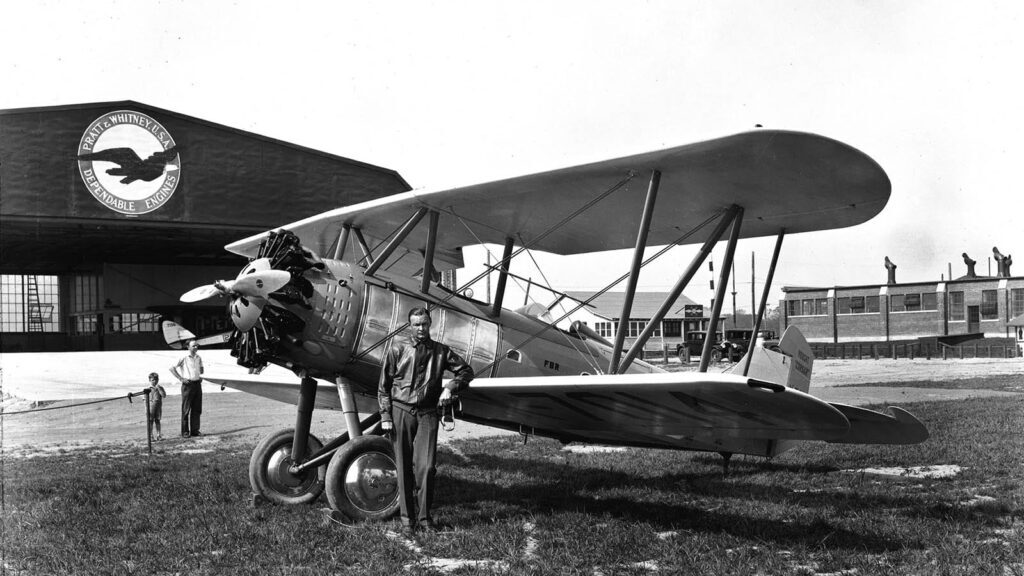
1950
July 5 — The Harmon International Trophy Committee announces its annual awards. Aviation pioneer James Doolittle is named “Aviator of the Decade,” Jacqueline Cochran the decade’s most outstanding female aviator, and U.S. Navy Vice Adm. Charles Rosendahl the leading aeronaut for his achievements in lighter-than-air flight. U.S. Air Force, A Chronology of American Aerospace Events, p. 58.
July 24 — In an effort to extend the service life of the Douglas DC-3, the U.S. Navy’s Bureau of Aeronautics awards a $20 million contract to the Douglas Aircraft Co. to upgrade 100 R4Ds, the military variant of the DC-3. The conversion into R4Ds, or “Super DC-3s,” includes redesigning the tails and wings, as well as updating the engines and nacelles. While the Super DC-3 never achieves the widespread success of its predecessor, it proves a reliable workhorse, particularly in the harsh conditions of the Antarctic. Aviation Week, July 31, 1950, p. 17; The Aircraft Year Book for 1950, p. 347.
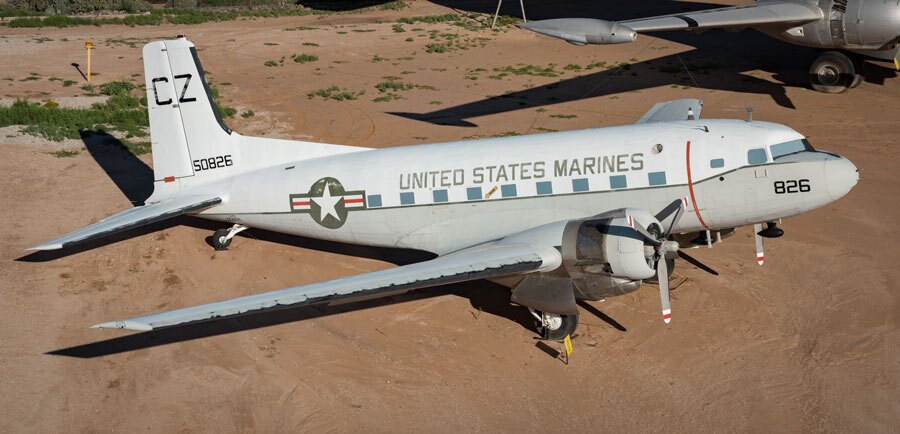
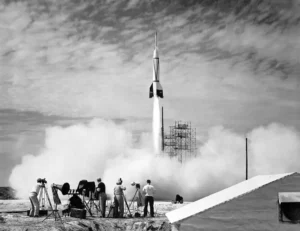
July 24 — The U.S. Army launches the first rocket from Cape Canaveral, Florida. This Bumper WAC BU8 is also the first U.S. two-stage rocket, consisting of a German V-2 missile first stage and a WAC Corporal sounding rocket as its second stage. U.S. Air Force, Chronology of American Aerospace Events, p. 58.
July 29 — British European Airways introduces the prototype Vickers Viscount 630 turboprop for experimental passenger service on routes between London and Paris, and London and Edinburgh. The inaugural flight, piloted by Capt. Richard Rhymer, departs London with 10 guests and 12 paying passengers. Among them are Sir Frank Whittle, pioneer of the turbojet engine, and George Edwards, the Viscount’s chief designer. Though the prototype remains in service for less than a month, it completes 44 round trips and carries a total of 1,848 passengers, effectively laying the groundwork for regular production of Viscounts into BEA’s fleet in 1953. The Aeroplane, Aug. 4, 1950, p. 123; L. G. S. Payne, Air Dates, p. 419.
July 29 — A Bumper-WAC rocket launched from Cape Canaveral reaches a speed of Mach 9, the fastest velocity achieved by a human-made object at the time. NASA, Aeronautics and Astronautics, 1915-1960, p. 65.
1975
July 1 — NASA’s Marshall Space Flight Center celebrates its 15th anniversary, marking the transfer of its personnel, facilities and responsibilities in 1960 to NASA from the U.S. Army Ballistic Missile Agency. In a message to Marshall Director William Lucas, U.S. President Gerald Ford praised the center’s achievements: “From its inception, the Marshall Center has remained at the forefront of our nation’s remarkable progress in space exploration.” Marshall continued development of the Redstone missile and Saturn I launch vehicle, later progressing to the next-generation Saturn IV and Saturn V that carried the first U.S. astronauts to Earth orbit and toward the moon. Marshall Space Flight Center Releases 75-131 and 75-140.
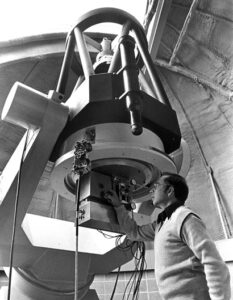
July 2 — Hyron Spinrad, an astronomer at the University of California, reportedly captures images of a galaxy estimated to be five to 10 times larger than the Milky Way. To photograph the galaxy, designated 3C123, Spinrad pairs the 119.6-centimeter telescope at Lick Observatory near San Jose, California, with a new device designed to filter out background light. Baltimore Sun, July 2, 1975, p. A3.
July 4 — The Boeing 747SP, a variant of Boeing’s popular wide-body jetliner, completes its first flight. This design is about 14.7 meters shorter and 21,772 kilograms lighter than the standard 747, offering greater range. The 747SP’s seating capacity of 230 passengers in a three-class configuration or up to 400 in a single class positions it to fill a niche between the Boeing 707 and the larger 747 series. Guy Norris and Mark Wagner, Modern Boeing Jetliners (1999), p. 20.
July 17 — The U.S. Navy phases out its last C-117D Skytrain, among the most famous military transports of all time. Also known as the Super DC-3, the design was extensively flown by the Navy and the Marine Corps during the Korean and Vietnam wars. The final flight is from Pensacola, Florida, to the Davis-Monthan Air Force Base in Arizona, the “boneyard” for obsolete military aircraft. Roy A. Grosnick, United States Naval Aviation, 1910-1995, p. 316, and other sources.
July 15-24 — NASA and the Soviet Union conduct the Apollo-Soyuz Test Project, the first international space mission. Planned as a symbol of Cold War cooperation, ASTP also served as a demonstration of the process for a future astronaut rescue. On July 17, astronauts Thomas Stafford, Vance Brand and Donald “Deke” Slayton in their Apollo capsule rendezvous with the Soyuz 19 spacecraft carrying cosmonauts Aleksey Leonov and Valery Kubasov. The capsules remain linked for two days, during which the crews exchange greetings and gifts and broadcast live messages to Earth. Soyuz 19 touches down near the Baikonur Cosmodrome in south-central Kazakhstan on July 21, the first Soviet landing to be broadcast. The Apollo crew spends an additional three days in orbit before splashing down in the Pacific Ocean on July 24. NASA, Astronautics and Aeronautics, 1975, pp. 131-136.
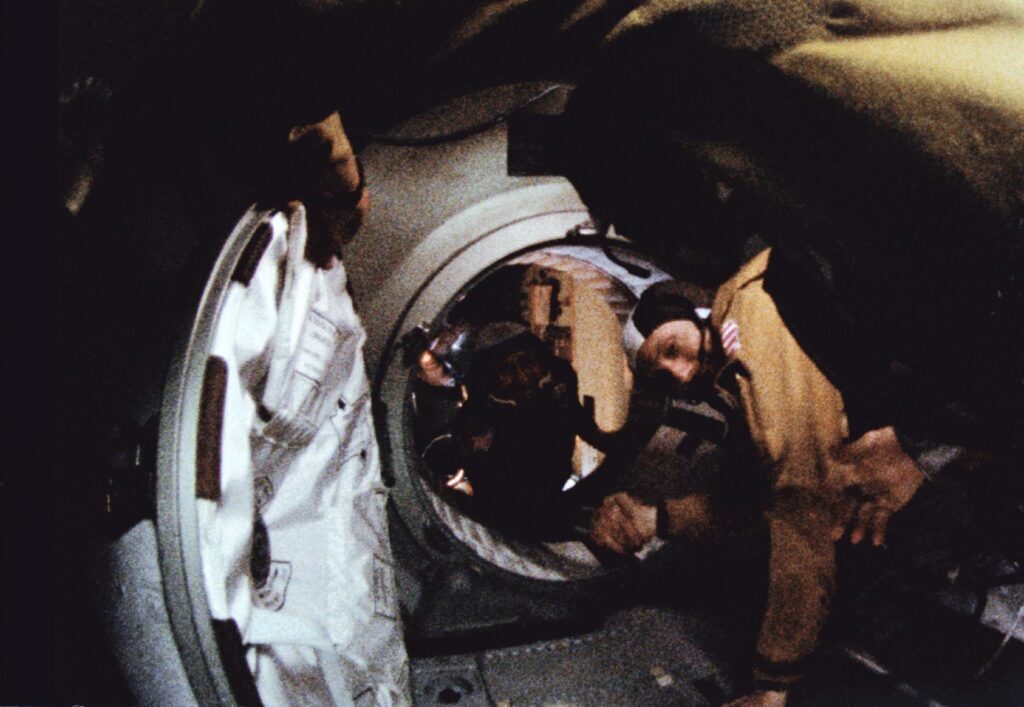
July 15 — Western Union’s Westar 1 and 2 satellites begin commercial video service, including the historic broadcast of the Apollo-Soyuz Test Project. Positioned in geosynchronous orbit, the two satellites relay signals to ground stations near major cities. NASA, Astronautics and Aeronautics, 1975, p. 136.
July 16 — NASA awards a $5.5 million contract to the University of Hawaii to complete the construction of an infrared telescope atop Mauna Kea, a dormant volcano on Hawaii Island. Scheduled for completion in 1977, the 3-meter infrared telescope will be the largest of its kind. It is designed to support NASA’s planetary exploration efforts, particularly the 1977 Voyager missions to Jupiter and Saturn. Additionally, the telescope will allow detailed observations of interstellar dust, exploding galaxies and other phenomena in deep space. NASA Release 75-209.
July 21 — The 14-nation Arab League, joined by six other African and Middle Eastern states, complete the initial technical and economic feasibility study for an Arab satellite communications network. The technical goals are to meet telecommunications requirements of Arabic-speaking states in North Africa and the Middle East for police work, weather broadcasting, civil aviation communications and shipping, as well as to expand Arabic technology into space. Aviation Week reports that, although the first satellites and initial ground stations will be bought from Western countries, the long-term goal is to shift operation and control to Arab nations. Aviation Week, July 21, 1975, pp. 56-59.
July 26 — The People’s Republic of China launches its third satellite, the 1,107-kilogram JSSW-3, also known as Changkong-1. This marks the first time China a payload heavier than a metric ton and the first successful orbital launch of an FB-1 medium-lift rocket. Washington Post, July 28, 1975.
2000
July 10 — EADS, the European Aeronautic Defence and Space Co., is created through the merger of three major aerospace firms: France’s Aérospatiale-Matra, Germany’s DaimlerChrysler Aerospace AG, and Spain’s Construcciones Aeronáuticas SA. EADS is renamed Airbus Group N.V. in 2014 and then Airbus Group SE in 2015, before ultimately becoming Airbus SE in 2017. Airbus website, https://www.airbus.com/en/about-us/our-history
July 25 — Air France Flight 4590 crashes shortly after takeoff from Charles de Gaulle International Airport in Paris, the only fatal accident in the 27-year history of the Concorde supersonic airliners. Investigators determine that during takeoff, one of the tires ran over a piece of scrap metal on the runway, propelling debris that ruptured one of the lefthand fuel tanks and ignited a fire. The other engines lost thrust, and the aircraft plummeted onto a nearby hotel, killing four on the ground and all 109 aboard. Bureau of Enquiry and Analysis for Civil Aviation Safety, “Accident on 25 July 2000 at La Patte d’Oie in Gonesse (95) to the Concorde registered F-BTSC operated by Air France,” Jan. 16, 2002.
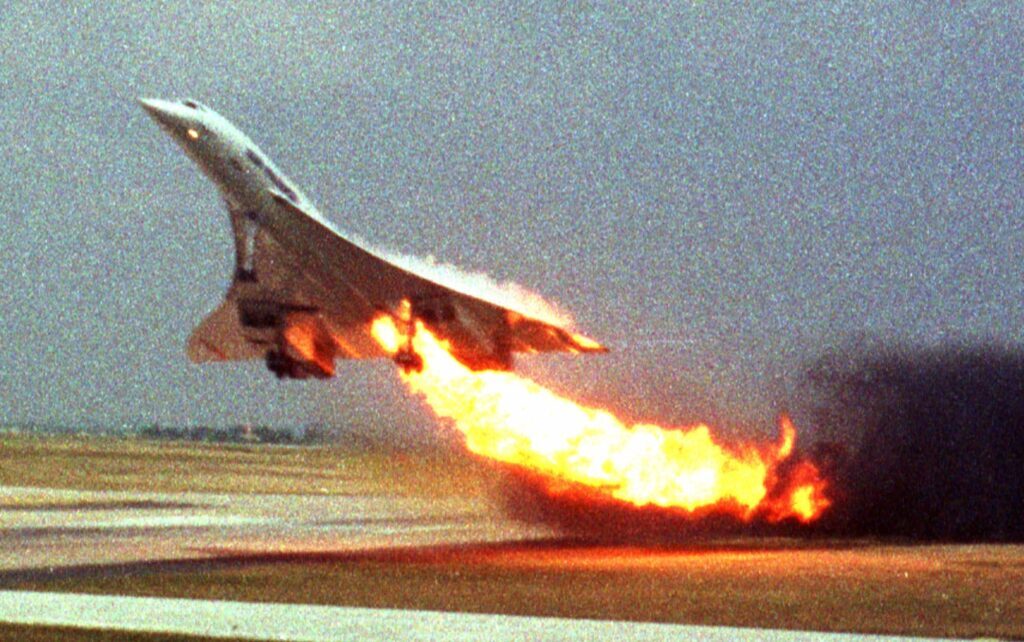
July 26 — The unoccupied Russian Zvezda service module the third component of the International Space Station, joining the Russian Zarya and U.S. Unity modules. The first cargo resupply vehicle, Progress M1-3, arrives Aug. 8, and the seven-astronaut crew of STS-106 arrives Sept. 8 for an eight-day stay to prepare ISS for its first long-duration crew. Flight International, Aug. 1-7, 2000, p. 55, and Aug. 15-21, 2000, pp. 32-33.
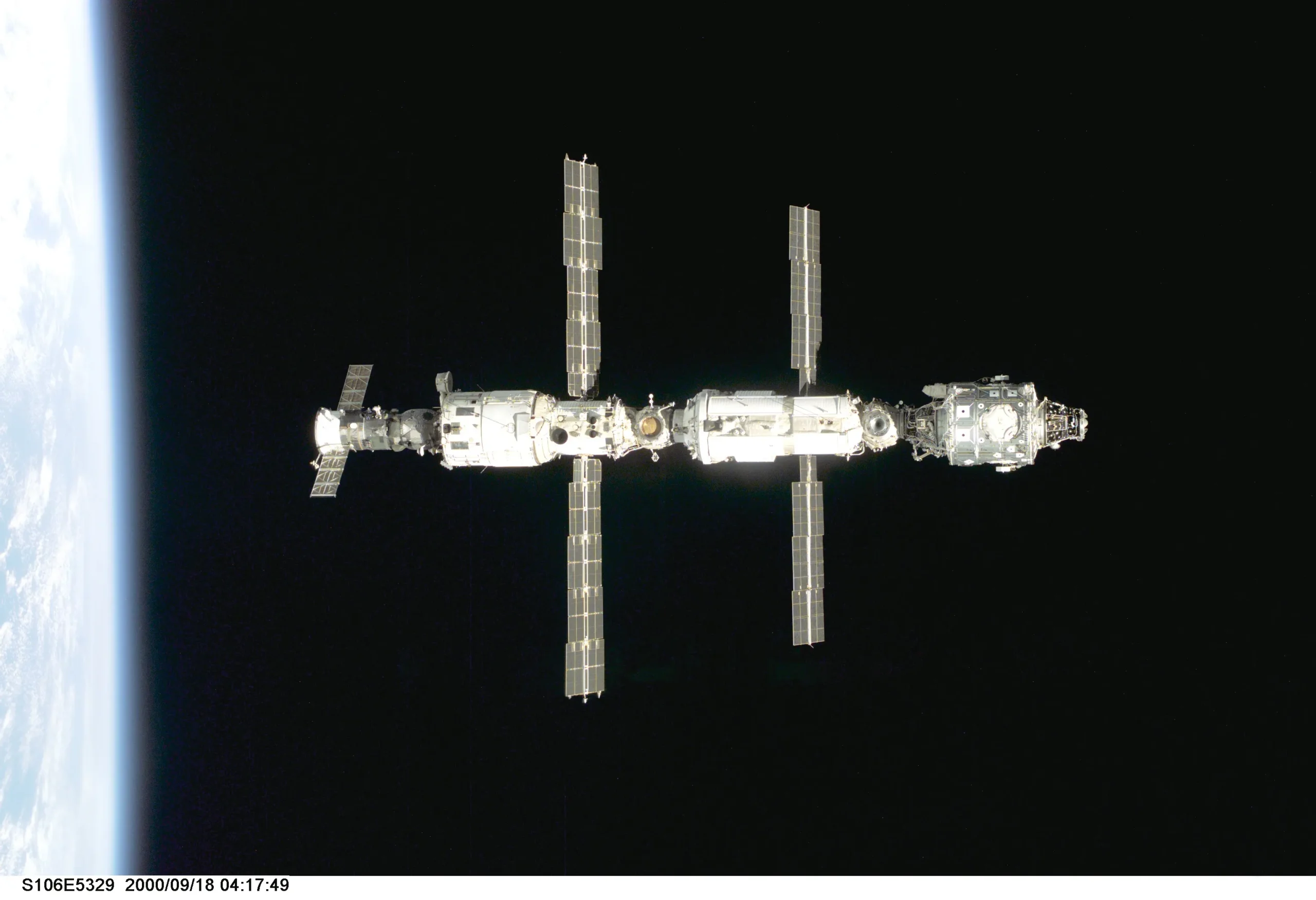
Also during July — Russia’s 160-seat, Tupolev Tu-234 — the renamed Tu-204-300 — makes its inaugural flight from Ulyanovsk, a western Russian city best known as the birthplace of former Soviet leader Vladimir Lenin. This twin jet is a shortened version of the 200-seat Tu-204 and is designed for extended range. Flight International, July 25-31, 2000, p. 18.
About Frank Winter
About robert van der linden
Stay Up to Date
Submit your email address to receive the latest industry and Aerospace America news.
